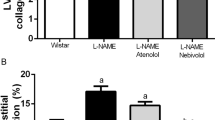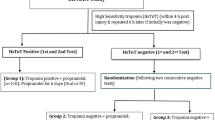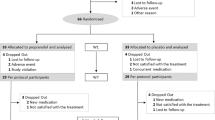Abstract
THE β-adrenoceptor antagonist propranolol is an effective antihypertensive drug in man1 but it is not known how the fall in blood pressure is produced2. There is a decrease in plasma renin activity3 and in cardiac output immediately on starting propranolol therapy but neither of these effects can explain fully the hypotensive action of the drug which is delayed in onset and associated with a reduction in peripheral vascular resistance4. It has been suggested that the fall in blood pressure after propranolol results from blockade of β-like adrenoceptors within the central nervous system5. Thus, intracerebroventricular injection of propranolol lowers blood pressure in conscious cats5 and rabbits6, an effect which is specific for the β-blocking (—) isomer of the drug7. The effective concentration of propranolol achieved in the hypothalamus by this route of administration is within the range predicted for hypertensive patients after chronic oral therapy8. We now present direct evidence that propranolol diminishes sympathetic nerve activity in the rabbit and that this central effect contributes to the hypotensive action of the drug.
This is a preview of subscription content, access via your institution
Access options
Subscribe to this journal
Receive 51 print issues and online access
$199.00 per year
only $3.90 per issue
Buy this article
- Purchase on SpringerLink
- Instant access to full article PDF
Prices may be subject to local taxes which are calculated during checkout
Similar content being viewed by others
References
Prichard, B. N. C., and Gillam, P. M. S., Br. Med. J., 1, 7 (1969).
Frohlich, E. D., New Engl. J. Med., 287, 1247 (1972).
Buehler, F. R., Laragh, J. H., Baer, L., Vaughan, E. D., and Brunner, H. R., New Engl. J. Med., 287 1209 (1972).
Tarazi, R. C., and Dustan, H. P., Am. J. Cardiol., 29, 633 (1972).
Day, M. D., and Roach, A. G., Nature, 242, 30 (1973).
Lewis, P. J., Reid, J. L., Myers, M. G., and Dollery, C. T., J. Pharmac. exp. Ther., 188, 394 (1974).
Day, M. D., and Roach, A. G., Clin. exp. Pharmac. Physiol., 1, 333 (1974).
Myers, M. G., Lewis, P. J., Reid, J. L., and Dollery, C. T., J. Pharmac. exp. Ther., 192, 327 (1975).
Schmitt, H., Schmitt, H., and Fénard, S., Neuropharmacology, 13, 347 (1974).
Page, I. H., Corcoran, A. C., Dustan, H. P., and Kopanyi, K., Circulation, 11, 188 (1955).
Author information
Authors and Affiliations
Rights and permissions
About this article
Cite this article
LEWIS, P., HAEUSLER, G. Reduction in sympathetic nervous activity as a mechanism for hypotensive effect of propranolol. Nature 256, 440 (1975). https://doi.org/10.1038/256440a0
Received:
Accepted:
Issue date:
DOI: https://doi.org/10.1038/256440a0
This article is cited by
-
Central nervous system mechanisms in blood pressure control
European Journal of Clinical Pharmacology (1985)
-
Brain levels and acute antihypertensive activity of β-Blockers
European Journal of Clinical Pharmacology (1985)
-
?-Blockers and psychometric performance: Studies in normal volunteers
European Journal of Clinical Pharmacology (1985)
-
The effect of captopril and propranolol on the responses to posture and isometric exercise in patients with essential hypertension
European Journal of Clinical Pharmacology (1983)



